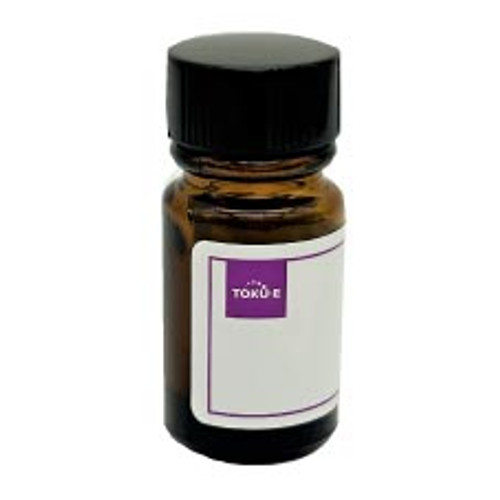Novobiocin Sodium is an aminocoumarin antibiotic that prevents cell division. It is an inhibitor of Hsp90 can be used to study heat shock proteins. It targets Gram-positive organisms, and is commonly used for antimicrobial susceptibility testing and cancer research. The product is also used in plant tissue culture to control contamination.
Novobiocin Sodium is freely soluble in water.
We also offer:
| Mechanism of Action | Aminocoumarin antibiotics target DNA gyrase, specifically the GyrB subunit, an enzyme which relieves strain as DNA unwinds during replication and transcription. It also acts as an inhibitor of retrovirus RNA-dependent DNA-polymerase. |
| Spectrum | Novobiocin Sodium targets primarily Gram-positive organisms and is commonly used to differentiate between coagulase negative (all but S. aureus and a few others) Staphylococcus species. S. saprophyticus is resistant to Novobiocin. |
| Microbiology Applications | Novobiocin Sodium is commonly used in clinical in vitro microbiological antimicrobial susceptibility tests (panels, discs, and MIC strips) against Gram-positive microbial isolates. Medical microbiologists use AST results to recommend antibiotic treatment options. Representative MIC values include:
|
| Plant Biology Applications | Novobiocin can be used in combination with gentamicin to prevent and cure Bacillus contamination in plant tissue culture. Benjama et al. demonstrated the potency of this combination in contaminated date palm tissue which led to routine use in plant tissue culture. |
| Cancer Research Applications | Novobiocin, a coumermycin antibiotic, is known to enhance anticancer drug sensitivity of cancer cells in vitro and in vivo, the mechanism of which remains undetermined. Novobiocin was a inhibitor of Breast Cancer Resistance Protein (BCRP) resulting in competitive inhibition of BCRP-mediated topotecan transport suggesting that Novobiocin can overcome BCRP-mediated resistance (Shiozawa, 2004). |
| Molecular Formula | C31H35N2NaO11 |
| References |
Benjama A and Charkaoui B (1997) Control of Bacillus contaminating date palm tissue in micro-propagation using antibiotics. Pathogen and microbial contamination management in micro- propagation. Kluwer academic publishers. Brock TD (1967) Novobiocin. In: Gottlieb D, Shaw PD (eds) Antibiotics. Springer, Berlin, Heidelberg Brown PO and Peebles CL (1978) Energy coupling in DNA gyrase and the mechanism of action of Novobiocin. PNAS 75(2):4838-4842 Shiozawa K (2004) Reversal of breast cancer resistance protein (BCRP/ABCG2)-mediated drug resistance by Novobiocin, a coumermycin antibiotic. Cancer Diag. and Ther. 108(1):146-151 |
| MIC | Bifidobacterium adolescentis| ≥15.6|| Bifidobacterium animalis| ≥500|| Bifidobacterium bifidum| ≥500|| Bifidobacterium bifidum | ≥500|| Bifidobacterium breve| ≥7.8|| Bifidobacterium Infantis| ≥500|| Bifidobacterium longum| ≥500|| Bifidobacterium pseudolongum| ≥500|| Bifidobacterium sp.| <0.98 - 15.61|| Bifidobacterium thermophilum| ≥500|| Brucella suis| ≥500|| Enterococcus faecalis| 4 - 12.5|| Enterococcus faecium| 0.4 - 8|| Escherichia coli| 62 - >1024|| Fusobacterium necrophorum| 0.2 - 12.5|| Klebsiella pneumonia| 128 - >512|| Lactobacillus acidophilus| 0.125 - 10|| Lactobacillus brevis| 0.25 - 4|| Lactobacillus bulgaricus| ≥0.98|| Lactobacillus casei| 0.125 - 32|| Lactobacillus curvatus| 4 - 32|| Lactobacillus delbrueckii| 0.125 - 32|| Lactobacillus fermentum| 4 - 16|| Lactobacillus gasseri| ≥10|| Lactobacillus johnsonii| <1|| Lactobacillus lactis| ≥0.98|| Lactobacillus paracasei| 0.98 - <1|| Lactobacillus plantarum| 0.125 - 125|| Lactobacillus rhamnosus| 0.125 - 32|| Lactobacillus sakei| 4 - 32|| Lactobacillus salivarius| <1|| Lactobacillus sp.| 0.125 - 32|| Pseudomonas aeruginosa| ≥32|| Pseudomonas pseudomallei| 1.6 - 12.5|| Salmonella typhimurium| 1.6 - >1024|| Staphylococcus aureus| ≥0.04 - 16|| Staphylococcus auricularis| ≥128|| Staphylococcus capitis| ≥32|| Staphylococcus caprae | ≥64|| Staphylococcus cohnii| 8 - 128|| Staphylococcus epidermidis| <0.04 - 0.25|| Staphylococcus haemolyticus| ≥128|| Staphylococcus hominis| ≥64|| Staphylococcus intermedius| ≥2|| Staphylococcus saprophyticus | ≥2|| Staphylococcus sciuri| ≥8|| Staphylococcus simulans| ≥64|| Staphylococcus warneri| ≥2|| Staphylococcus xylosus| ≥128|| Streptococcus faecium| ≥0.6|| Streptococcus pneumonia| 0.25 - 2|| Streptococcus pyogenes| 0.3 - 2|| Treponema hyodysenteriae | 12.5 - >100|| Xanthomonas maltophilia| >64|| Xylella fastidiosa| 4 - 8|| |








